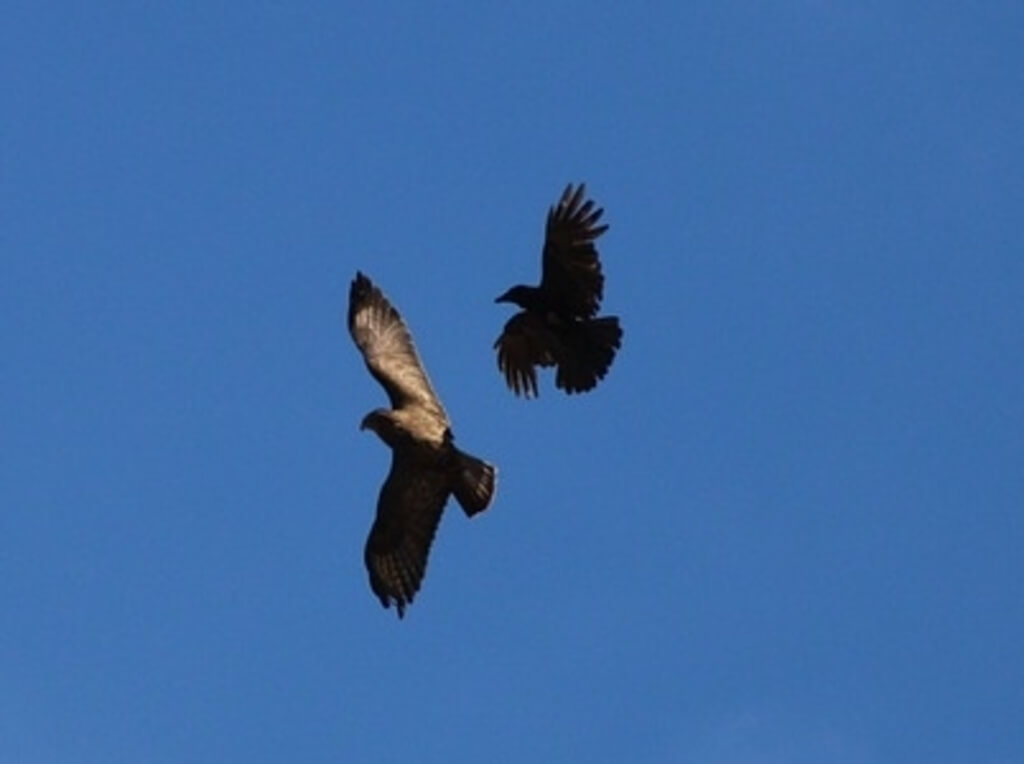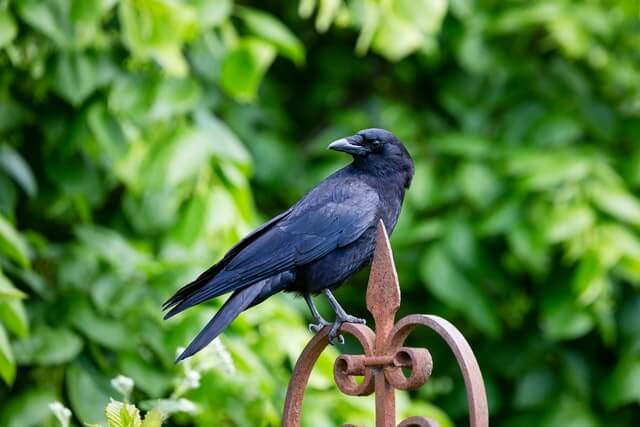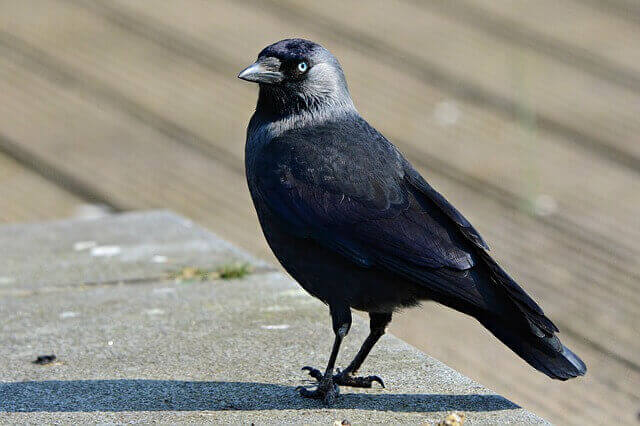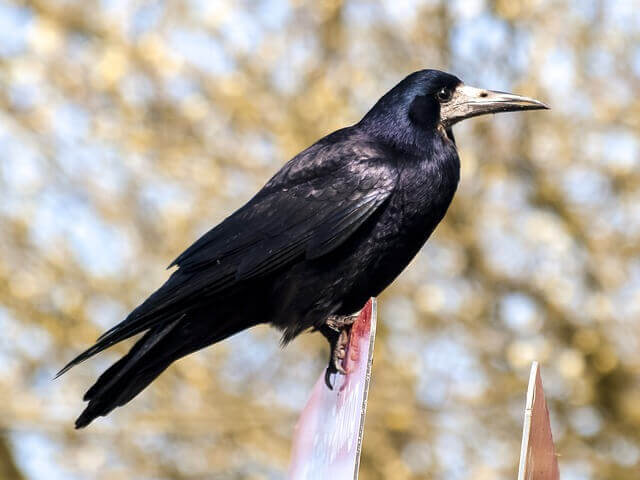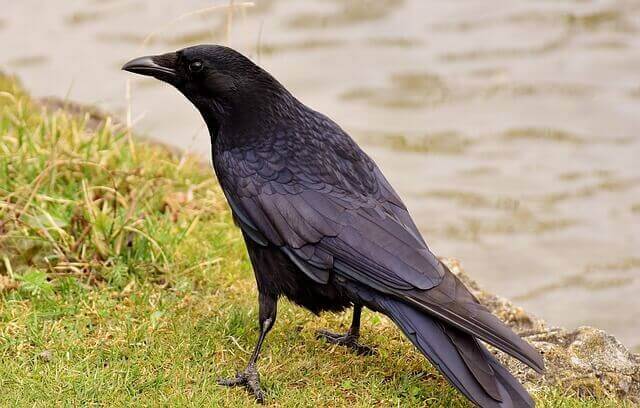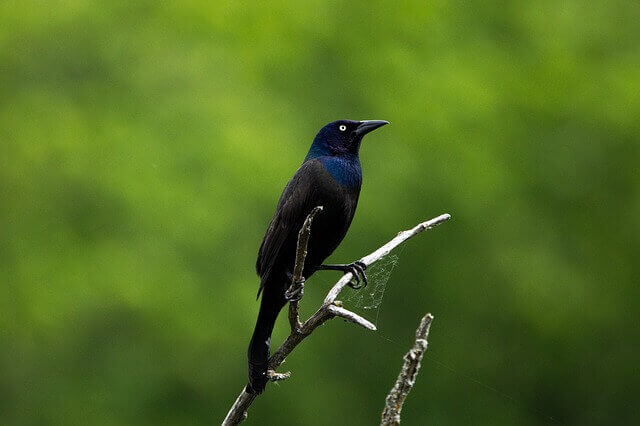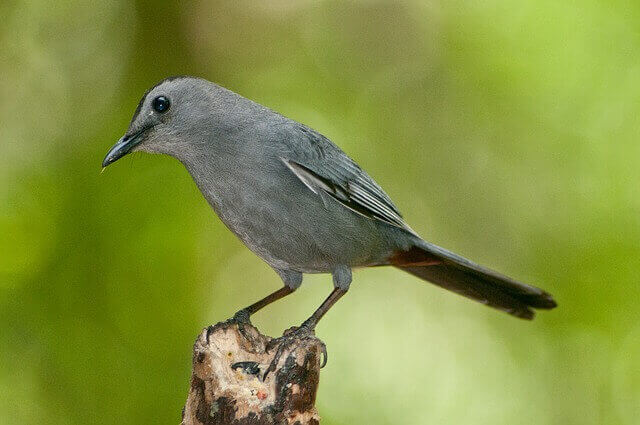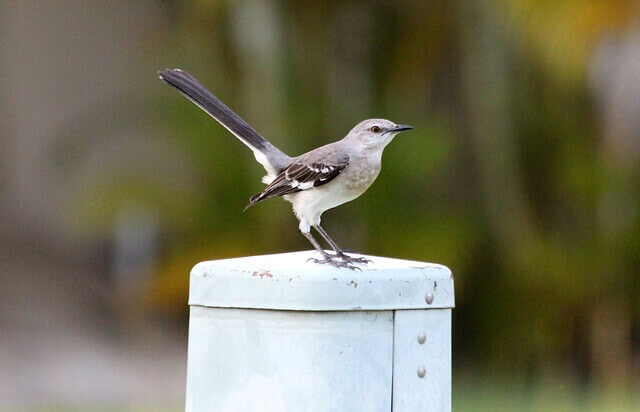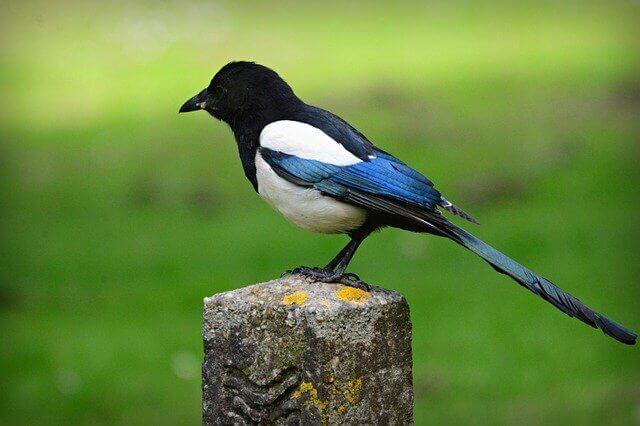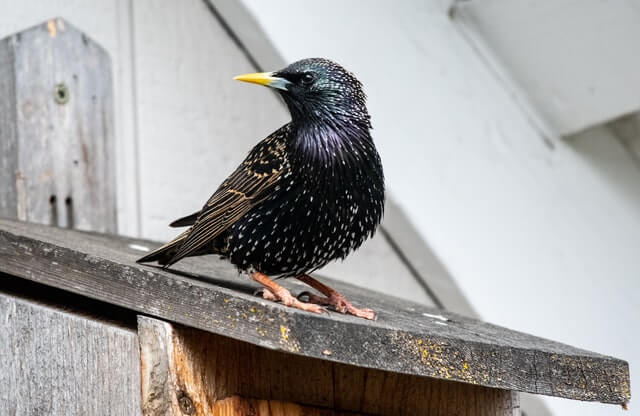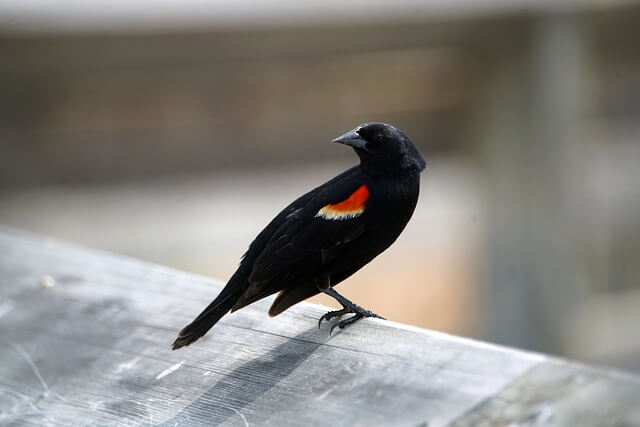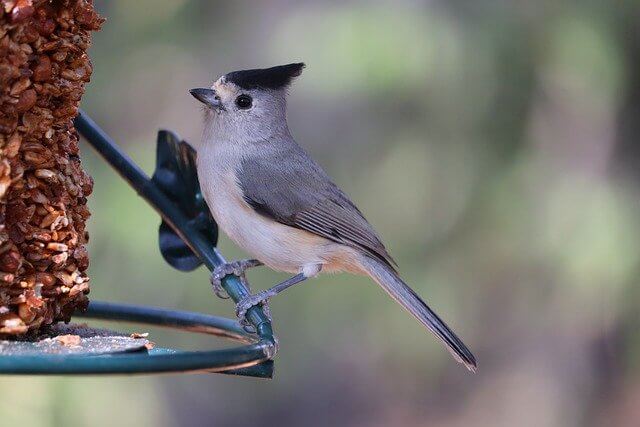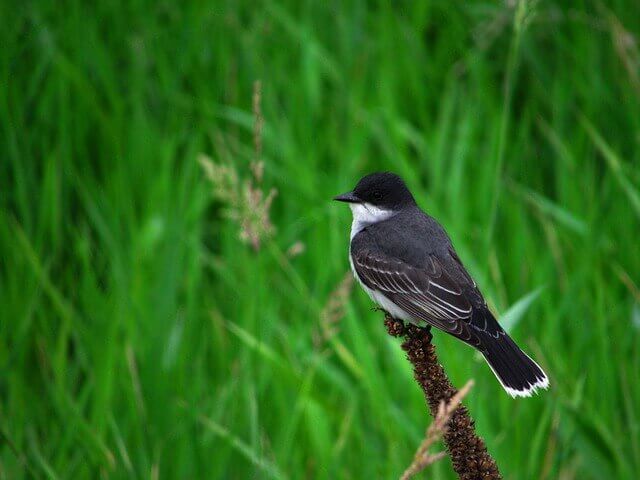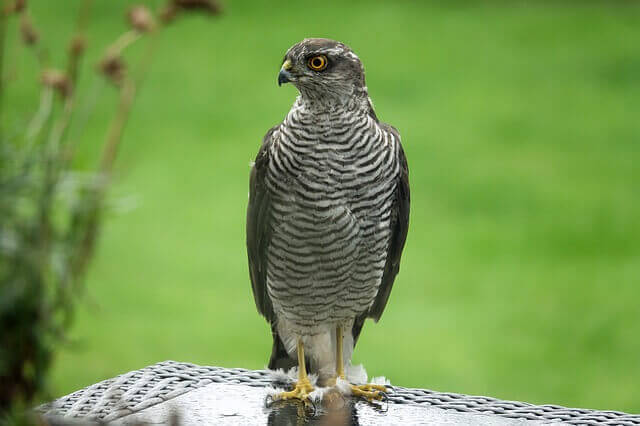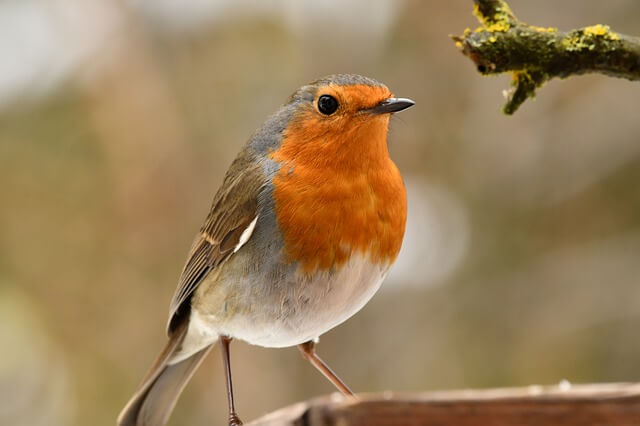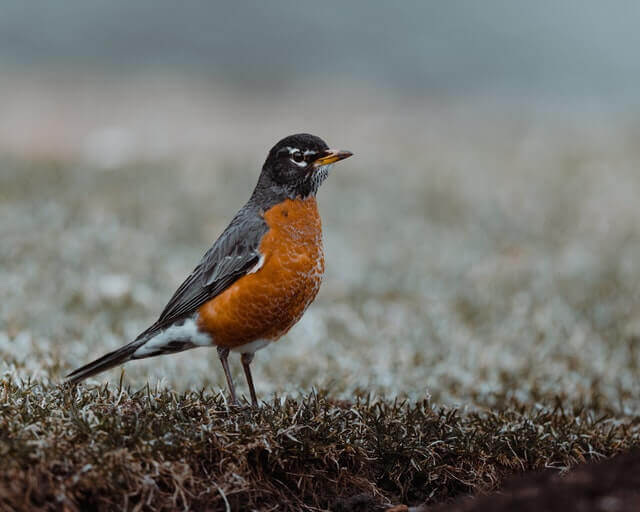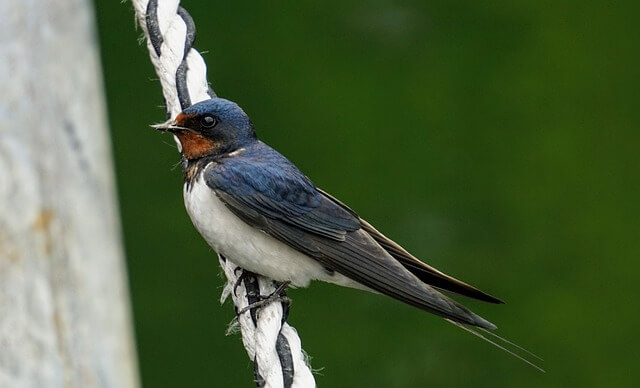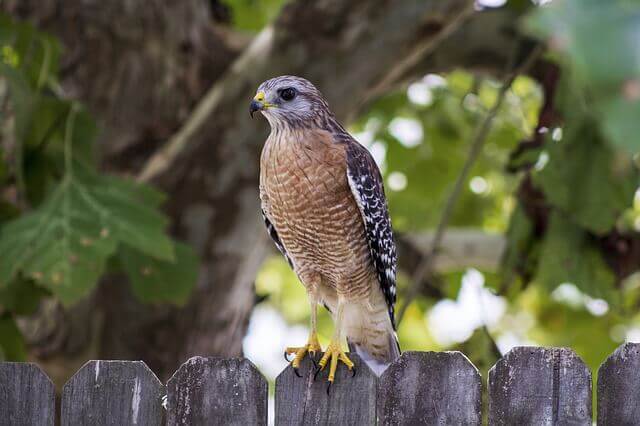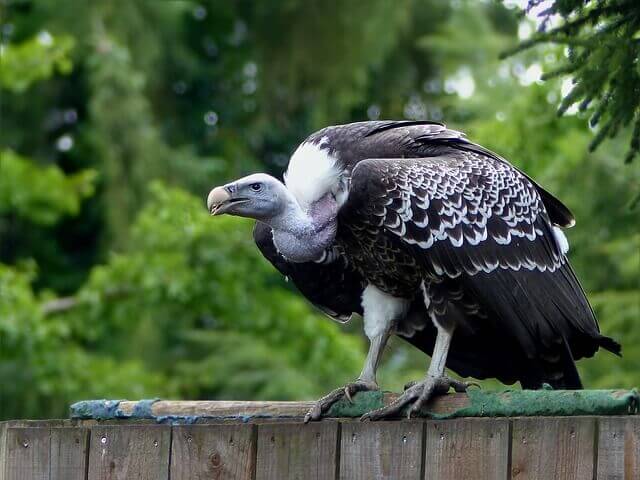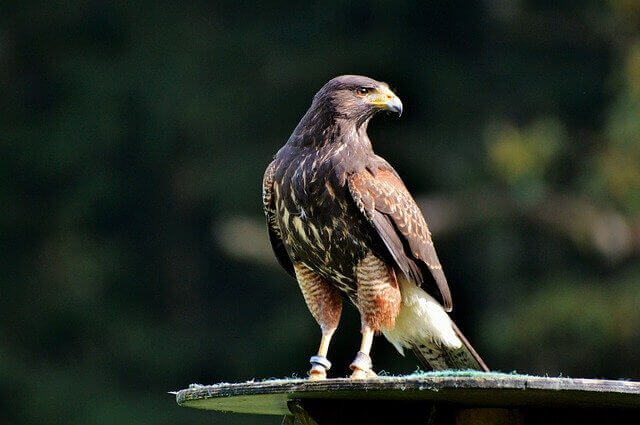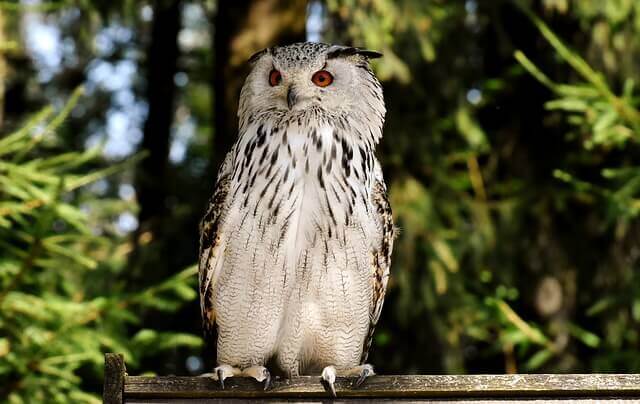Every year, millions of birds are killed by other birds. Most of these attacks are done to take over a territory or kill off the competition for food and resources.
In this article, we’ll go through 26 different types of birds that attack other birds, with photos, ID & information about each one.
Table of Contents
- 1 Crows
- 2 Jackdaws
- 3 Rooks
- 4 Ravens
- 5 Grackles
- 6 Blackbirds
- 7 Gray Catbird
- 8 Shrikes
- 9 Jays
- 10 Northern Mockingbird
- 11 Magpies
- 12 European Starling
- 13 Red-winged Blackbird
- 14 Chickadees
- 15 Titmice
- 16 Kingbirds
- 17 Sparrowhawk
- 18 British Robin
- 19 American Robin
- 20 Swallow
- 21 Seagull
- 22 Hawks
- 23 Eagles
- 24 Vultures
- 25 Falcons
- 26 Owls
- 27 Author
Crows
Crows are typically seen as pesky animals that cause trouble for humans, but they have a darker side. They will attack other birds and kill them to steal their food.
This is known as kleptoparasitism, and it is not an uncommon behavior among corvids (a family of birds that includes crows).
- Range: Southern Canada to northern Mexico, Central America and Florida.
- Habitat: Open areas, fields, farmlands, orchards, golf courses, dumpsites and parks.
Jackdaws
Jackdaws are a species of bird that live in European and Asian habitats. They live in colonies of up to 20,000 pairs. The jackdaw will defend its territory from other species by chasing them away and attacking their nest or young if necessary.
If they see another bird that doesn’t belong to the colony, they attack it and try to chase it out of the area.
- Range: , North America, Europe, North Africa, Asia.
- Habitat: Urban areas, farmlands, open country , and mountains.
Rooks
Rooks are a type of bird that can be found in many parts of the world, including North America, Europe, Asia and Africa. Rooks are very territorial and will attack other birds near their nests.
They have been known to prey on small animals such as rodents or insects if they happen to come too close to their nest area.
- Range: Europe to Asia and North America
- Habitat: Forests, fields, meadows, marshes, orchards, gardens, parks and city centers.
Ravens
Ravens are the most intelligent of all birds, as well as opportunistic predators, meaning they will eat anything that is easy to catch and kill. Ravens will attack other bird species for many reasons, one of which is that they’re defending their territory from a possible invasion.
When ravens get territorial, they’ll swoop down and dive bomb any intruders into their area with a high-pitched cawing sound mixed in.
- Range: North America, Northern Africa, Eurasia.
- Habitat: Deserts, tundra, rainforests and even suburban areas.
Grackles
Grackles are known for their aggressive behavior. They have been observed attacking other bird species and picking on smaller birds that they find weaker than themselves. These birds can be seen in large groups swooping down from the sky to attack a smaller bird, or chasing them until they fly away in fear.
The main reason for why grackles would attack another bird could be competition over food, nesting sites, or mates. Another possibility could be territory disputes with a different species of bird.
- Range: United States, southern Canada, northern Mexico, Central America, Caribbean.
- Habitat: Grasslands, agricultural fields, cities, parks and along waterways.
Blackbirds
Blackbirds are known for their aggressive behavior. When they attack other bird species, the reason is usually territorial disputes or to drive away predators. Blackbirds also fight over food sources, nesting sites and mates.
In some cases, blackbirds will kill weaker birds in order to reduce competition for resources or because of a threat posed by the weaker bird’s presence.
- Range: North America, Central America, Europe, Asia Minor, North Africa, Russia.
- Habitat: Near water sources such as lakes or streams.
Gray Catbird
The gray catbird is a songbird that lives in the eastern and central United States. These birds are known for their distinctive, loud songs which can be heard from miles away.
It has been observed that Catbirds are known for their aggression and hostility towards other birds. There are many reasons why gray catbirds attack other birds, including food competition, territory defense, nest parasitism, and brood parasitism.
- Range: Eastern North America, from southern Canada to Central America.
- Habitat: Forests, thickets, orchards, farmlands with hedgerows and woodland edges.
Shrikes
The shrike is a small, predatory bird mostly found in North America, Europe, Asia and Africa. There are three main reasons why shrikes attack other birds: food gathering, territorial defense or defending its offspring.
In order to survive the harsh environment of their habitat, shrikes have to get their food from other animals, and they do this by waiting in the bush until an animal comes close enough for them to attack. They are also territorial, so they will defend their territory against intruders or prey that may not be as big of a threat.
- Range: North America, Eastern Europe, Southern Russia, Western Asia and North Africa.
- Habitat: Deserts, plains, forests, and mountainous regions.
Jays
Blue Jays will attack any bird that it sees as a threat to its territory, and this can include birds of their own species. Jays are often known for their unprovoked attacks on other birds. These birds of prey use the element of surprise to catch their victims off guard, usually going after songbirds that are in proximity.
The reason why Jays attack other birds is that they believe that it’s their territory or food source being threatened by another animal encroaching on their area.
- Range: Eastern parts of Canada, United States, Mexico, and Central America.
- Habitat: Forests, open woodlands, orchards, suburbs and parks.
Northern Mockingbird
The Northern Mockingbird is a species of bird that has been observed attacking other birds. While the natural tendency of a mockingbird is to be aggressive, this behavior can also be caused by factors such as territorial, overcrowding or limited food sources.
There are not many instances where this type of behavior has been seen, but in some cases it is evident that the mockingbirds will attack and kill smaller songbirds. The most common victims seem to be Towhees, Sparrows and Cardinals.
- Range: Eastern United States and southern Canada.
- Habitat: Meadows, fields, and savannas.
Magpies
The Black-billed magpie is a black, blue and white bird that can be found in North America. The magpie has been seen to be aggressive towards other birds. They are most likely to show aggression towards robins, sparrows, and pigeons in particular.
Magpies are most likely to attack during mating season and when protecting their territory. It’s also been seen that magpies were more likely to be aggressive if they were close to a nest or near an area where they would like to build one.
- Range: North America, Central America, South America, Europe, Asia, Africa.
- Habitat: Forests, deserts, grasslands and urban areas.
European Starling
The European Starling is an iridescent black bird that can be found in many countries, including the United States. The European Starling will attack other birds, and even mobbing larger ones such as the raven or hawk, in order to get them out of their territory or take their food.
They are not territorial creatures, but do live in large groups called “roosts.” In urban areas, they have been observed attacking sparrows and crows when there is limited food available because of competition from more dominant species.
- Range: North America, Europe, Asia, Central America.
- Habitat: Open areas, grasslands and pastures.
Red-winged Blackbird
The Red-winged Blackbird is a medium-sized bird that can be found in North America. This beautiful bird has a black plumage, with a red and yellow shoulder patch.
This species will attack other birds to defend their territory or nest. They are known for harassing larger birds such as hawks or owls out of their hunting grounds by mobbing them.
- Range: North America, Europe, and Asia.
- Habitat: Open areas, marshes, and swamps.
Chickadees
The aggressive nature of chickadees is well known. Chickadees will attack other birds, especially when they feel threatened or provoked. Chickadee’s aggression can be due to a number of factors including: mating season, territory defense, lack of food sources and natural predators.
There are many reasons why a chickadee may be feeling aggressive towards another bird, but it seems as though most attacks happen during the breeding season in order to protect their nest from potential predators.
- Range: Eastern United States to the western coast of Canada, Central America.
- Habitat: Woodlands, mixed forests, coniferous forests.
Titmice
Titmice are small birds that can be found in the United States and Canada. These types of birds usually feed on insects, berries, and seeds.
When they attack other bird species, it is most likely due to territoriality or nesting grounds, as these species are known for their aggressive behavior when defending their territory. They will often attack and mob larger birds such as hawks.
- Range: North America, Asia, Europe, Africa.
- Habitat: Woodland edges or farmland.
Kingbirds
Kingbirds are a group of birds in the tyrant flycatcher family. Kingbirds are known for their aerial hunting style. They fly up high in the sky and then dive to catch prey, which is usually insects or other small creatures.
Some kingbirds have been observed attacking larger birds such as crows and hawks by swarming them from above and driving them out of trees where they feed on nesting areas. These attacks can be an attempt to drive a competitor away from food sources, territory or nest sites.
- Range: North America, Central America, South America, Europe, Asia and Africa.
- Habitat: Open areas, pastures, farmlands, parks, suburban areas.
Sparrowhawk
The sparrowhawk is a predatory bird. It can be found in North America, Europe and Asia. They are an opportunistic hunter, which means they hunt for food whenever it’s available to them. Sparrowhawks typically feed on rodents like mice, voles and shrews, but they will also take other small animals such as birds, frogs and lizards when the opportunity arises.
Sparrowhawks will often attack other birds like songbirds that are smaller than themselves in order to prey on them. They also prefer to hunt on the ground, unlike other birds of prey, which usually fly over land looking for prey.
- Range: Eurasia, Africa, North America and South America.
- Habitat: Woodland and scrubland areas, forest edges, and urban parks with trees.
British Robin
British Robins are a common bird in many gardens and parks. It’s one of the most recognizable on the British countryside, with males often fighting over territory to attract females. In order to protect themselves against these attacks, robins will usually have two defense mechanisms: mobbing and “anting.”
Mobbing involves surrounding the predator in a circle of birds. The circling may escalate to pecking and can be very vigorous in the case of owls. Anting is when a robin will rub its head on an anthill or similar object, such as lawn furniture, car tires, etc., often until blood comes out.
- Range: Great Britain, France, Belgium, Ireland, Denmark, Norway, Sweden, Finland.
- Habitat: Lawns, meadows, and gardens.
American Robin
The American Robin is a popular species of bird in North America. The birds can be found year-round across the continent, but their populations are most concentrated during spring months. American Robins are not aggressive birds, but occasionally they will attack other species of bird.
When this happens, it is usually because the robin is defending its territory or trying to mate with a female in another male’s territory. There are two times of year when robins attack other birds: March-April, when nesting season begins, and November-December, during winter months.
- Range: Canada, through the United States, into northern Mexico.
- Habitat: Grasslands, parks, suburbs, and rural areas.
Swallow
Swallows are small, slender birds that migrate in large flocks during the summer months. They’re common throughout North America and other parts of the world as well. Swallows are aggressive little birds that don’t take kindly to any potential threats in their territory or nearby areas.
When they feel threatened by another animal encroaching on their nesting area, swooping down at them is a natural instinct for these creatures to protect themselves and the eggs in their nest.
- Range: North America, Europe, Asia, Africa and Australia.
- Habitat: Near rivers, streams, ponds, lakes and seashores.
Seagull
Seagulls are usually seen as scavengers, but they have been known to attack other birds. Seagulls are known for being very territorial. It’s not uncommon to see them attack other birds if they feel threatened or the other bird encroaches on their territory.
Seagulls are especially likely to attack other seagulls or even ducks, as they may be looking for food, and it will take any chance it can get to keep its territory safe from others.
- Range: Every continent on Earth except for Antarctica.
- Habitat: Coastal waters, estuaries, the open ocean, inland lakes and rivers.
Hawks
It is a well-known fact that hawks are natural predators of other birds. In the wild, they are known to prey on anything from pigeons and crows to small songbirds. The most common way for a hawk to attack its prey is by swooping down at high speeds and snatching it up in its talons before flying off with it into the sky.
However, there are times when this doesn’t happen – some types of hawks will stalk their prey over long periods before attacking.
- Range: Inhabit all continents except Antarctica and Australia.
- Habitat: Forests, deserts, prairies, grasslands, wetlands and agricultural areas.
Eagles
Eagles are majestic creatures that are known for their sharp talons and large wingspan. These birds of prey live in North America, Africa, Europe, Asia and Australia. In recent years they have been observed attacking other types of birds such as ravens, hawks and crows.
This can be attributed to a phenomenon called kleptoparasitism where the eagle is acting on its predatory instincts when it has not eaten enough food from hunting or scavenging animals.
- Range: Worldwide.
- Habitat: Wetlands, prairies, mountains, deserts and forests.
Vultures
Do vultures attack other birds? Yes, but only when they’re feeling threatened. Vultures are scavengers that eat rotting flesh from animals and carcasses on the ground. They will usually fly away if you approach them with a camera or your hand in the air.
In some cases, though, vultures may be startled by another bird approaching too closely to their nest and will then strike out at it. This is called kleptoparasitism.
- Range: North American continent. Known as the buzzard in Europe, Asia, Africa.
- Habitat: Mountains, plains, forests, deserts, grasslands and even near oceans.
Falcons
Yes, Falcons do attack other birds. In fact, falcons are known to be aggressive and will hunt for prey in a variety of ways. There are many reasons that a falcon would attack another bird. One reason is because they need to eat, and the other bird is an easy target.
The second reason may be because there was some kind of territorial conflict between them. A third reason could be that they were defending their nest or young from an attacker.
- Range: North America, Europe, Asia and Africa.
- Habitat: Forests, fields, desert canyons and tundra regions.
Owls
Owls are well known for their excellent night vision and their ability to hunt at night. But they also have another skill that most people don’t know about – they can attack other birds!
This is because owls possess talons, sharp claws on the end of their feet, which they use to rip prey apart. It’s estimated that about 4% of owl attacks on smaller birds occur during the day, and during their breeding season from March to July.
- Range: North America, South America, Africa, Europe, Asia and Australia.
- Habitat: Woodlands or forests, near lakes or rivers, near mountains, deserts or wetlands.

